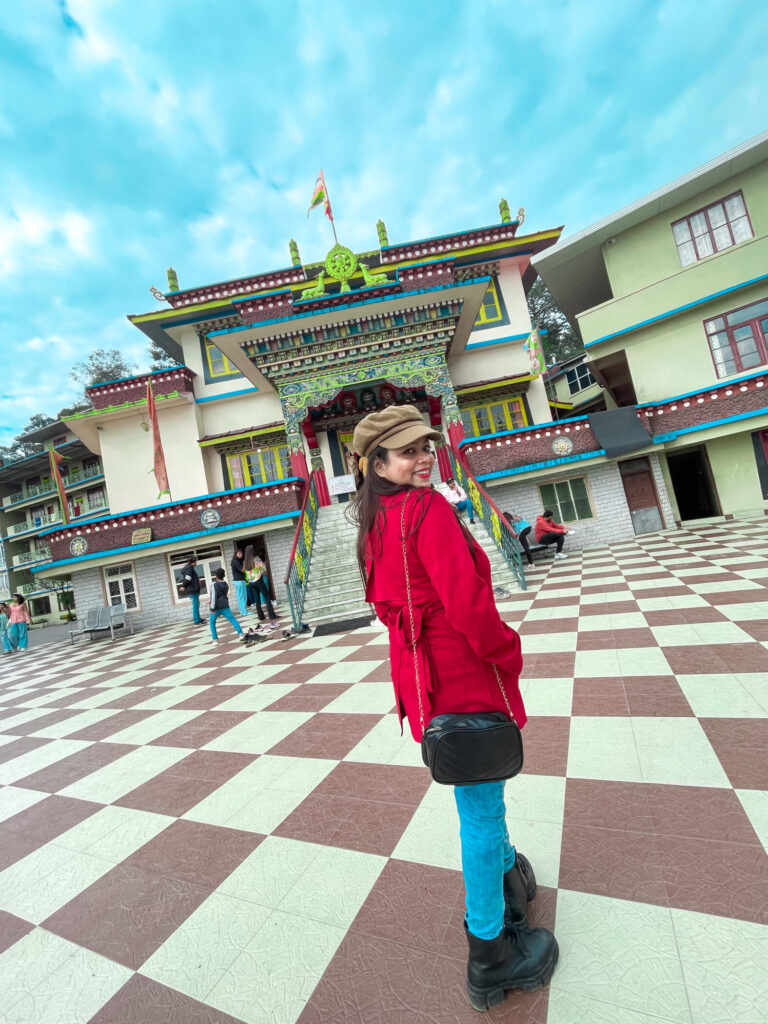Sikkim, a serene paradise nestled in the Himalayas, is known for its stunning natural landscapes and rich Buddhist heritage. The state is home to some of India’s most revered Buddhist monasteries, offering visitors a unique window into centuries-old traditions, peaceful rituals, and vibrant festivals. For travelers seeking tranquility, culture, or spiritual insight, exploring Sikkim’s monasteries is a profound experience. Here’s a guide to some of the must-visit monasteries in Sikkim.
1. Rumtek Monastery – The Dharma Chakra Centre
Overview:
Located 24 kilometers from Gangtok, Rumtek Monastery, also known as the Dharma Chakra Centre, is one of Sikkim’s largest and most renowned monasteries. Built in the 16th century and reconstructed in the 1960s, it serves as the main seat of the Karma Kagyu lineage of Tibetan Buddhism in Sikkim.

What to Expect:
Visitors can explore the beautifully adorned main shrine, featuring intricate murals, thangkas (Tibetan paintings on cotton or silk), and golden Buddha statues. One of the monastery’s highlights is the stunning Golden Stupa, which holds relics of the 16th Karmapa. Rumtek is also known for its annual Tibetan New Year festival, Losar, which showcases traditional Tibetan dance and music.


How to Get There:
The monastery is easily accessible from Gangtok by local buses or taxis. The scenic drive to Rumtek offers glimpses of Sikkim’s lush, mountainous landscapes, adding to the allure of the journey.
2. Pemayangtse Monastery – Sikkim’s Ancient Marvel
Overview:
Perched atop a hill in the town of Pelling, Pemayangtse Monastery is one of the oldest and most significant monasteries in Sikkim. Founded in the 17th century by Lama Lhatsun Chempo, it follows the Nyingma tradition, one of the oldest schools of Tibetan Buddhism.
What to Expect:
The three-story structure of Pemayangtse houses ancient artifacts, a collection of statues, and beautiful wall paintings. The main attraction is a seven-tiered wooden structure known as the “Zangdok Palri,” which represents Guru Padmasambhava’s heavenly palace. Visitors can also enjoy breathtaking views of Mount Kanchenjunga from the monastery grounds.
How to Get There:
Pemayangtse is around 2 kilometers from Pelling. Travelers can take local transport or embark on a short hike for a more immersive experience. The journey itself, surrounded by vibrant rhododendron forests, is especially delightful during spring.
3. Tashiding Monastery – A Spiritual Haven
Overview:
Located in West Sikkim, Tashiding Monastery is often regarded as one of the holiest sites in the state. Established in the 17th century by Ngadak Sempa Chempo Phunshok Rigzing, one of the three principal lamas who introduced Buddhism to Sikkim, Tashiding exudes a unique spiritual charm.
What to Expect:
The monastery is famous for its Bhumchu Festival, celebrated during the Tibetan New Year. During this festival, monks display a sacred vase filled with holy water, believed to predict the coming year’s prosperity. Pilgrims from across the world gather here to seek blessings. The surrounding chortens (Buddhist shrines) and prayer wheels add to the monastery’s mystical atmosphere, providing a place for quiet contemplation.
How to Get There:
Tashiding Monastery is approximately 40 kilometers from Pelling and can be accessed via scenic roadways, often bordered by dense, green forests. The journey to Tashiding is an adventure, offering incredible views of the Teesta River along the way.
4. Enchey Monastery – A Sanctuary of Peace in Gangtok
Overview:
Situated on a scenic hilltop overlooking Gangtok, Enchey Monastery is one of Sikkim’s most iconic and accessible monasteries. Established in 1909, it is home to monks of the Nyingma order of Vajrayana Buddhism. Known as the “Solitary Monastery,” Enchey is revered for its peaceful atmosphere and its ties to Guru Padmasambhava, the legendary figure who introduced Buddhism to Tibet.


What to Expect:
Visitors to Enchey Monastery can experience its vibrant annual festivals, including the Cham dance festival, where masked monks perform sacred dances to bless devotees and ward off evil spirits. The monastery is adorned with prayer flags, murals, and intricate carvings depicting Buddhist deities, adding to its mystical charm. The serene ambiance, combined with panoramic views of the Khangchendzonga range, makes it a must-visit for those seeking both beauty and spirituality.
How to Get There:
Enchey Monastery is located just a short distance from Gangtok’s main town center, making it easily accessible by local taxis or on foot for those interested in a gentle hike. This proximity to Gangtok makes it a popular choice for tourists looking to explore Sikkim’s spiritual side without a lengthy journey.
Tips for Visiting Sikkim’s Monasteries
- Dress Modestly: Sikkimese monasteries are sacred spaces. Wear respectful attire, covering shoulders and knees.
- Respect Customs and Traditions: While exploring, observe the monastic customs and refrain from taking photos in restricted areas.
- Best Time to Visit: The ideal time for visiting Sikkim’s monasteries is during the spring (March-May). As well as autumn (September-November) seasons when the weather is pleasant.
Final Thoughts
Visiting Sikkim’s monasteries is more than a cultural exploration; it’s a journey into the heart of Buddhist spirituality and Himalayan mystique. Whether you’re witnessing a colorful festival, admiring intricate Tibetan art, or meditating in the peaceful surroundings, each monastery offers a unique experience. So, pack your bags, embrace the calm, and let Sikkim’s monastic treasures inspire your soul.

